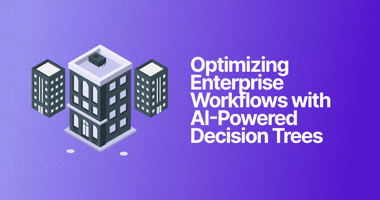From Customer Support to IT Helpdesks: Decision Tree Examples That Save Time and Money
How Decision Tree Analysis is Transforming Healthcare

In the rapidly evolving world of healthcare, data-driven decision-making is critical to improving patient outcomes and operational efficiency. One powerful tool that is gaining traction in the industry is decision tree analysis. By using structured, logical models to guide clinical and administrative decisions, healthcare organizations can enhance diagnostic accuracy, streamline treatment protocols, and improve overall efficiency.
This article explores decision tree analysis in healthcare, provides real-world decision tree examples in healthcare, and explains how medical decision trees are being used to optimize patient care.
What is Decision Tree Analysis in Healthcare?
A decision tree is a graphical representation of decision-making processes. It consists of nodes (representing decisions, outcomes, or conditions) and branches (representing possible actions or paths). In healthcare, decision trees are widely used for clinical decision support, diagnosis, treatment planning, and operational decision-making.
Decision tree analysis in healthcare helps professionals make evidence-based choices by structuring complex decisions into simple, easy-to-follow steps. This method reduces uncertainty and improves consistency in medical practices.
Decision Tree Healthcare Examples
Diagnosis and Treatment SelectionPhysicians frequently use medical decision trees to diagnose conditions and determine appropriate treatments. For example, a decision tree for diagnosing chronic obstructive pulmonary disease (COPD) might look like this:
- Step 1: Does the patient have a history of smoking?
- If yes, proceed to Step 2.
- If no, consider other respiratory conditions.
- Step 2: Are there symptoms like persistent cough and shortness of breath?
- If yes, proceed to Step 3.
- If no, monitor or investigate further.
- Step 3: Pulmonary function tests confirm reduced airflow?
- If yes, diagnose as COPD and recommend treatment options.
- If no, reassess symptoms and explore other conditions.
Predicting Patient Outcomes
Decision tree analysis in healthcare is also used to predict patient outcomes based on medical history and risk factors. For instance, a decision tree in cardiology might help assess the risk of heart disease:
-
Step 1: Does the patient have high blood pressure?
-
If yes, proceed to Step 2.
-
If no, consider other risk factors.
-
-
Step 2: Is the patient overweight?
-
If yes, proceed to Step 3.
-
If no, monitor and suggest lifestyle changes.
-
-
Step 3: Does the patient have a family history of heart disease?
-
If yes, categorize as high risk and recommend preventive care.
-
If no, continue with regular monitoring.
-
Hospital Resource Allocation
Hospitals and healthcare administrators use decision tree analysis to optimize resource allocation. For example, during the COVID-19 pandemic, decision trees were used to determine patient prioritization for ICU beds:
-
Step 1: Is the patient experiencing severe respiratory distress?
-
If yes, proceed to Step 2.
-
If no, provide outpatient care.
-
-
Step 2: Does the patient have underlying conditions (e.g., diabetes, heart disease)?
-
If yes, prioritize for ICU.
-
If no, monitor closely and allocate resources accordingly.
-
By systematically analyzing patient data, hospitals can improve patient care while efficiently utilizing medical resources.
Benefits of Decision Tree Analysis in Healthcare
-
Improved Decision-Making: Decision trees simplify complex medical decisions, making them more transparent and structured.
-
Increased Efficiency: By following standardized pathways, healthcare providers can make faster and more accurate diagnoses.
-
Enhanced Patient Outcomes: Evidence-based treatment pathways lead to better patient management and reduced medical errors.
-
Cost Reduction: Optimizing treatment protocols and resource allocation helps minimize healthcare costs.
-
Scalability: Decision trees can be adapted for use in various medical domains, from general practice to specialized fields like oncology and cardiology.
Conclusion
Decision tree analysis is revolutionizing healthcare decision-making by providing clear, logical pathways for diagnosis, treatment, and hospital administration. Whether it’s diagnosing diseases, predicting patient outcomes, or optimizing hospital resources, medical decision trees are proving to be invaluable tools in modern healthcare.
As artificial intelligence and machine learning continue to evolve, decision tree models will become even more sophisticated, further enhancing evidence-based medical decision-making. Healthcare organizations looking to improve efficiency and patient care should consider leveraging decision tree analysis to drive better outcomes.


